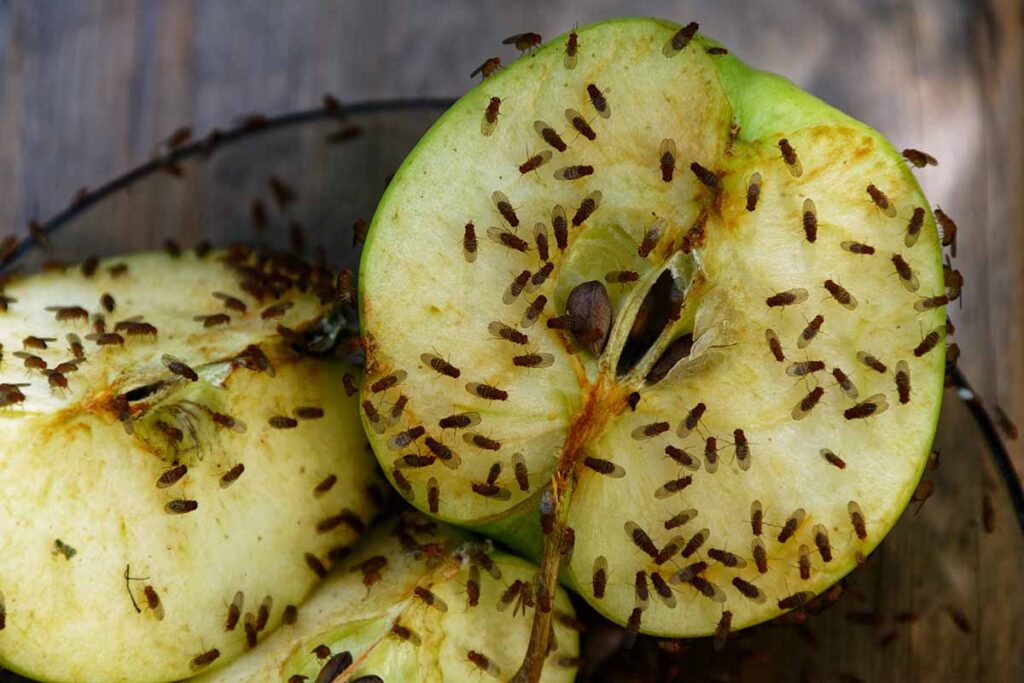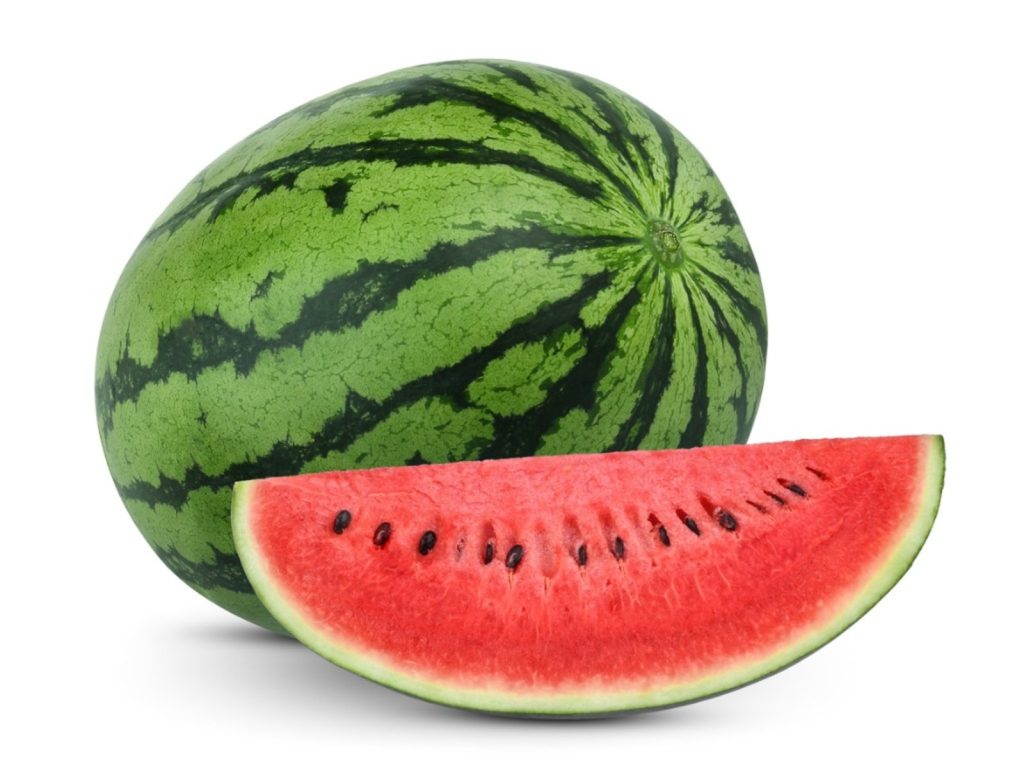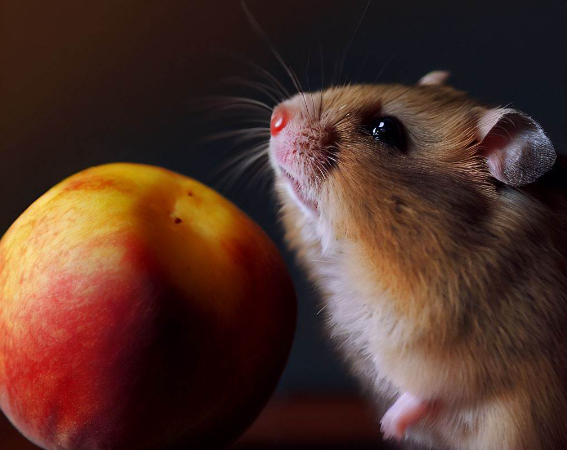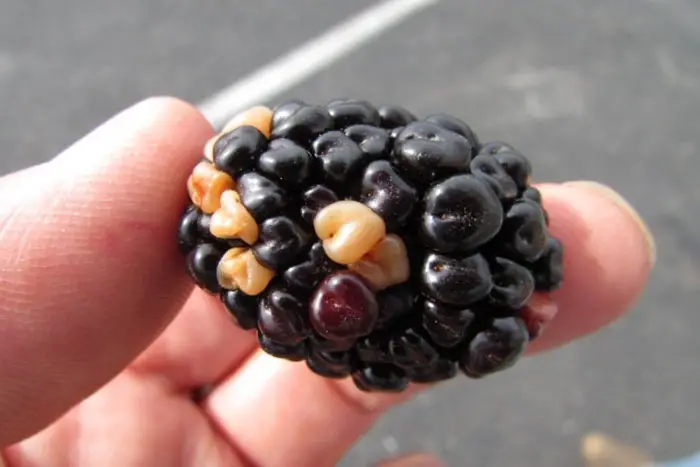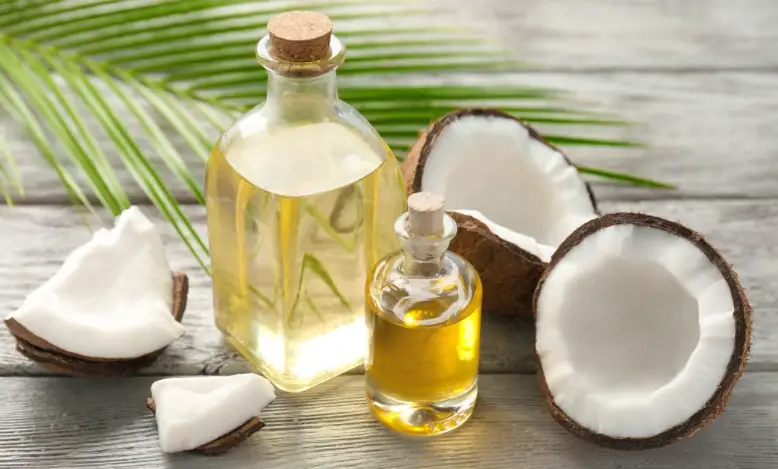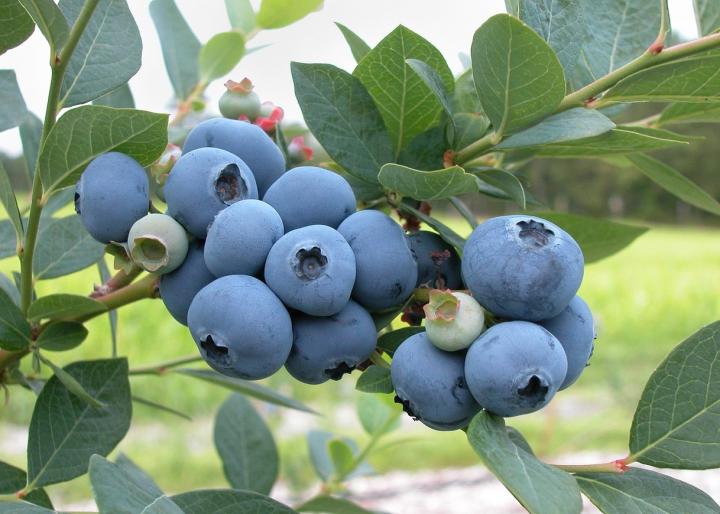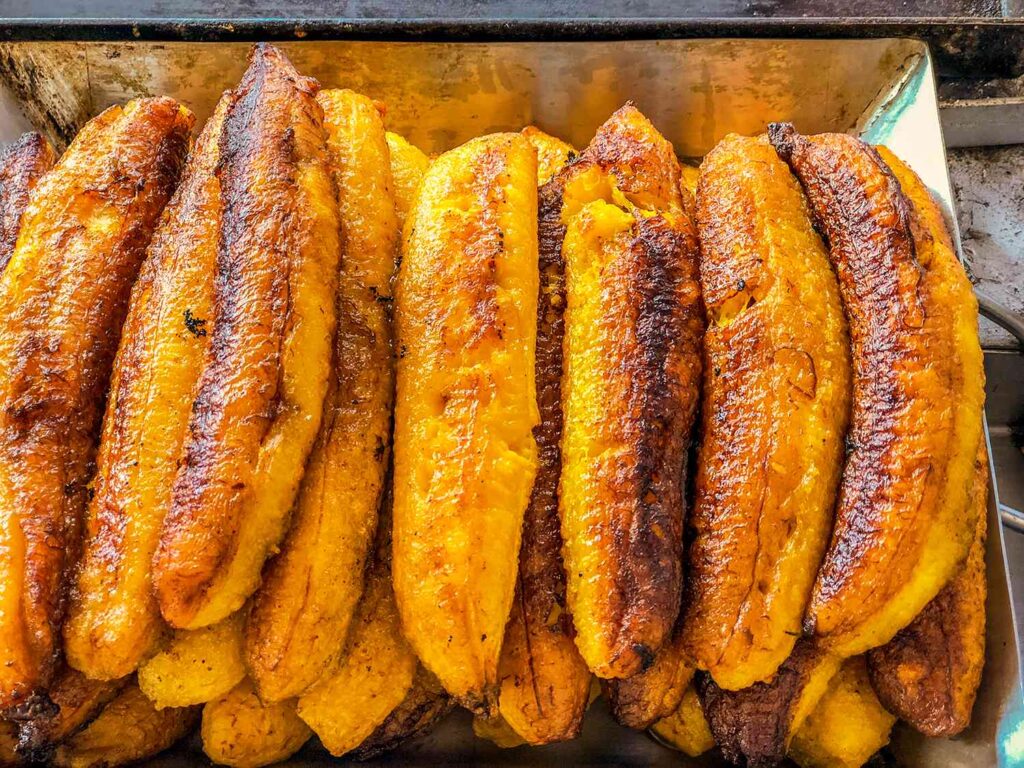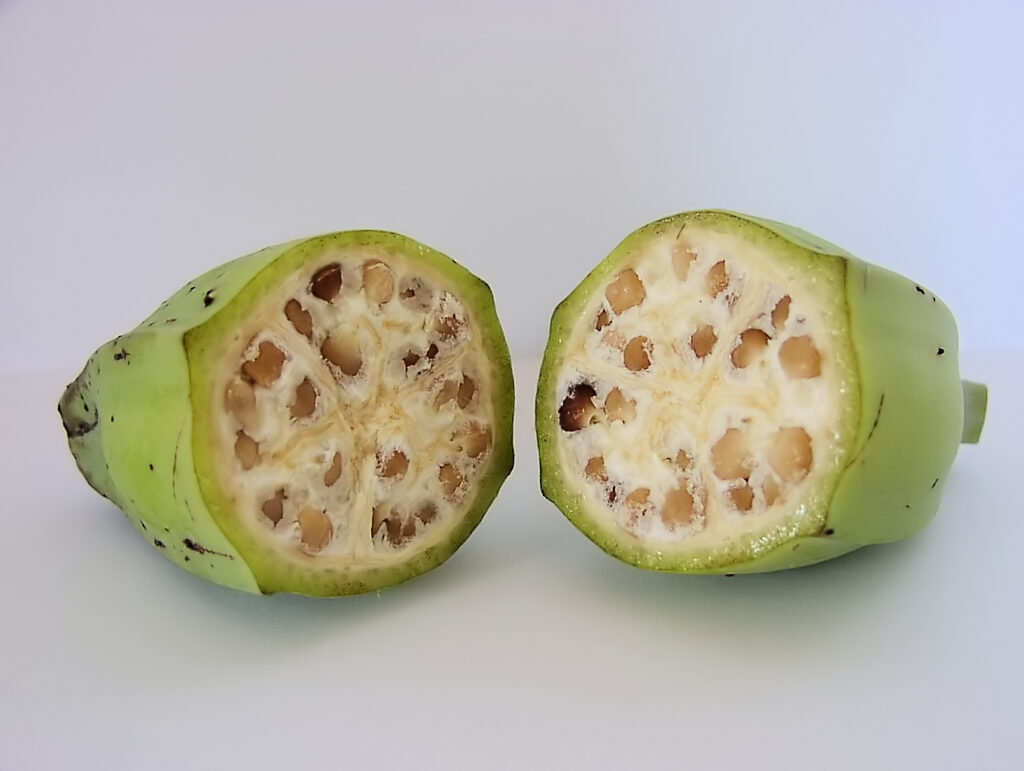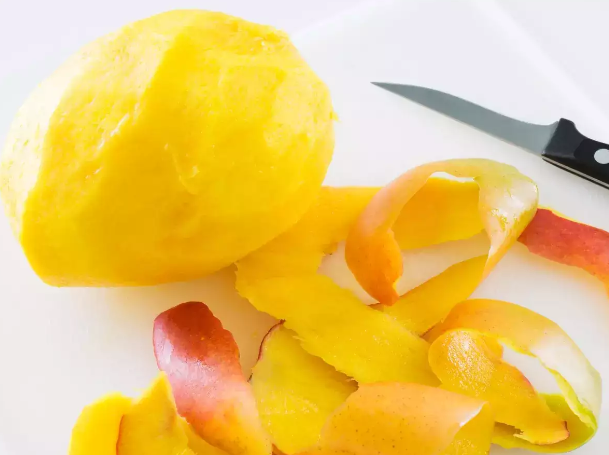Red fruits are as good for you as they are pretty to look at. This article will show you 35 kinds of red fruits with photos and explain how they can help keep you healthy.
Fruits that are red and have seeds come with many health perks. They get their bright red hue from something called lycopene, which is a type of nutrient that protects your cells and calms down swelling in your body. The seeds are also great for you—they have things like fiber, vitamins, minerals, and fats that are good for your health.
Their eye-catching red is more than just for show – it means these fruits have a lot of nutrients and stuff that’s good for you. We’re going to talk about a big mix of red fruits from sweet strawberries and juicy watermelons to tangy cherries and tasty pomegranates, and we’ll explain how eating them can make you healthier.
Table of Contents
- 1. Cherries
- 2. Strawberries
- 3. Red Grapefruit
- 4. Pomegranates
- 9. Red Bananas
- 10. Blood Oranges
- 11. Red Dragon Fruit
- 12. Red Papaya
- 13. Cherry Tomato
- 14. Chilli Pepper
- 15. Rambutan
- 16. Red Bayberry
- 17. Desert Quandong
- 18. Red Mango
- 19. Red Mulberry
- 20. Red Passion Fruit
- 21. Red Pear
- 22. Red Plum
- 23. Red Chokecherry
- 24. Lychee Fruit
- 25. Prickly Pear
- 26. Watermelon
- 27. Lingonberry
- 28. Red Tamarillo
- 29. Goji Berries
- 30. Saguaro Cactus Fruit
- 31. Muntingia
- 32. Hawthorn Berries
- 33. Dates
- 34. Figs
- 35. Mombin
- Components of Red Fruits That Make Them Beneficial
1. Cherries

Cherries have nutrients called anthocyanins, which cause their rich red color. Research shows cherries can help lessen swelling in the body and lower the chance of getting diabetes and heart problems. Cherry seeds are filled with good stuff like fiber, vitamin E, and nutrients called plant sterols. The fiber in the seeds is especially good for your belly and your heart—it helps grow healthy bacteria in your gut and can lower bad cholesterol in your blood.
You can snack on fresh cherries or make some cherry juice. The seeds can even be used if you grind them up and put them in foods you bake. If you want, you can even make a paste out of cherry seeds that’s like nut butter. Dried cherries are also an option. They are great in trail mix.
2. Strawberries

Strawberries are a big favorite, and they’re full of vitamin C, manganese, and fiber. The tiny seeds come with omega-3 fats, protective nutrients, and proteins. There’s a component in strawberries called ellagic acid which is thought to work against cancer. Anthocyanins in strawberries also act as protectors against cell damage and help keep your heart safe.
Strawberries are great fresh or frozen. Chop them up and mix them into yogurts or salads, or blend them into a smoothie. You can cook up some delicious strawberry jam which can increase the health benefits even more.
3. Red Grapefruit

Red grapefruits are another red fruit with the antioxidant lycopene. Research suggests the seeds of grapefruits have nutrients that can help lower cholesterol and blood pressure. With fiber and potassium, grapefruit is an ally for your heart.
You can munch on slices of red grapefruit by themselves, or add them to yogurt. Mix the juice into a cool grapefruit slushy. Try tossing grapefruit pieces and seeds into a salad or roasting them with a bit of honey for a healthy treat.
4. Pomegranates

Red currants are little red fruits that look like tiny grapes all bunched together. They are healthy because they have things like quercetin, vitamin C, anthocyanins, and an acid called gamma-linoleic. Even the seeds are good for you because they have omega-3 fats. When you eat red currants, you might help keep your skin, brain, and immune system working well.
Red currants taste sour and a bit strong. They are good for making jams and sauces. You can add them to fruit salads or make popsicles from their juice. If you bake muffins or scones, try putting red currants in them. You can eat dried currants as a healthy snack, too.
9. Red Bananas

Red bananas are not as well-known as the yellow kind, but they are just as healthy. They have a lot of fiber, potassium, vitamin C, and different antioxidants. There are even more nutrients and fiber in the seeds and skin. Some research says that things found in red bananas might help fight off cancers and diabetes.
If you like red bananas, try them on cereal, yogurt, or oatmeal with the seeds. They are great in smoothies and shakes, too. You can bake them into banana bread or muffins and get even more good stuff from the seeds.
10. Blood Oranges

Blood oranges have a red inside and juice that make them special. They have more vitamin C than regular oranges because of an antioxidant called anthocyanin. Blood oranges also have seeds and fiber that might help reduce bad cholesterol. Research suggests that they may lower inflammation, protect your heart, and help your eyesight.
You can drink the juice of blood oranges or mix it into smoothies. They can make fruit salads, yogurt, or oatmeal better with their slices. You can add pieces, juice, and seeds to seafood dishes, grain bowls, or citrus salads to make them even more exciting.
11. Red Dragon Fruit

Red dragon fruits stand out with their bright pink insides and are really good for you. They don’t have many calories but have a lot of fiber and vitamin C. The small black seeds are good to eat and add protein, healthy fats, and minerals. Dragon fruit can help your immune system, gut health, and blood sugar levels. They are red because of antioxidants called betacyanins.
Try adding red dragon fruit and seeds to salads for some color and health benefits. They blend well into smoothies, too. You could use dragon fruit as a pretty topping for desserts. To make a refreshing treat like sorbet, blend the dragon fruit with banana and milk.
12. Red Papaya

Red papaya is loaded with good things like beta-carotene and lycopene, more so than the yellow kind. The seeds have healthy fats and protein, too. Eating papaya might help your heart and reduce inflammation because of its antioxidants. The fruit even has special enzymes that help your body use its nutrients better.
You can eat red papaya with its seeds for breakfast, or cook it with lime and spices to make chutney. Add the seeds to your smoothies for an extra kick. If you use green papaya, you can shred it into salads for more nutrition.
To sum up, eating red fruits with their seeds can be really healthy. They have antioxidants, fiber, healthy fats, vitamins, and minerals which can lower inflammation, bad cholesterol, and the chance of getting long-term sicknesses. Seeds make these fruits even better for you. Try different kinds and enjoy how they taste and how good they can be for your health.
13. Cherry Tomato

Cherry tomatoes are tiny, sweet fruits that people like to grow at home. They’re small, red, and full of flavor that makes many dishes better. They’re often tossed into salads, giving a juicy and fresh taste.
You can also roast cherry tomatoes to bring out their sweetness. They make a tasty snack on their own or can add a pop of color and flavor to your cooking. Because of their small size, they’re perfect for adding a finishing touch to plates or mixing into fruit salads. Start growing your own cherry tomatoes and taste their sweet and tangy magic right in your backyard!
14. Chilli Pepper

Chilli Peppers are famous for being hot and spicy, but did you know some are sweet too? These peppers come in all sorts, like jalapeno, habanero, and cayenne, each with its own level of heat. They’re not just for spicing up meals – they’re also full of vitamins A and C, and they have antioxidants.
The capsaicin in Chilli Peppers, which is what makes them hot, is also really good for your health. It can help reduce inflammation and ease pain. Whether you like your food hot and fiery or just a bit sweet, Chilli Peppers offer unique flavors and plenty of health benefits.
15. Rambutan

Rambutan is an exotic fruit with a hairy appearance. It’s related to the lychee and offers a juicy, sweet taste. This tropical treasure is packed with vitamin C and other nutrients that help the body in various ways, like boosting the immune system and aiding digestion.
The fruit’s flesh is white and encases a seed, which is generally not eaten. Rambutans are a delightful treat on their own, but you can also mix them into fruit salads, desserts, and even savory dishes for a burst of sweetness and a vibrant splash of color. Don’t let the spiky exterior intimidate you; the rambutan’s succulent interior is worth the adventure!

The rambutan comes from Southeast Asia and is known for its round shape and bright red skin. It’s easy to spot because it’s covered in spiky ‘hair’, which makes it look very unique. But the best part of the rambutan is inside, where you’ll find soft, juicy, and sweet flesh that’s white and tastes amazing.
This fruit has a taste that’s similar to grapes, and it’s a real treat for anyone who loves sweet flavors. Rambutan is very popular in Asia, where people love it for its striking color and refreshing taste. If you’re looking to try a new and exciting fruit, rambutan is definitely something you should try.
16. Red Bayberry

The Red Bayberry, which is also called the Chinese Strawberry, has been grown near China’s Yangtze River for more than 2,000 years. It’s a bright red fruit that tastes both sweet and a little tangy.
People in China eat Red Bayberries in many ways. They enjoy them fresh, dried, canned, and even use them to flavor drinks like beer, cocktails, and spirits. The juice from these berries, known internationally as Yumberry juice, has become so popular it’s now exported to Europe. Red Bayberries not only taste great but are also packed with nutrients, making them a healthy addition to any meal.
17. Desert Quandong
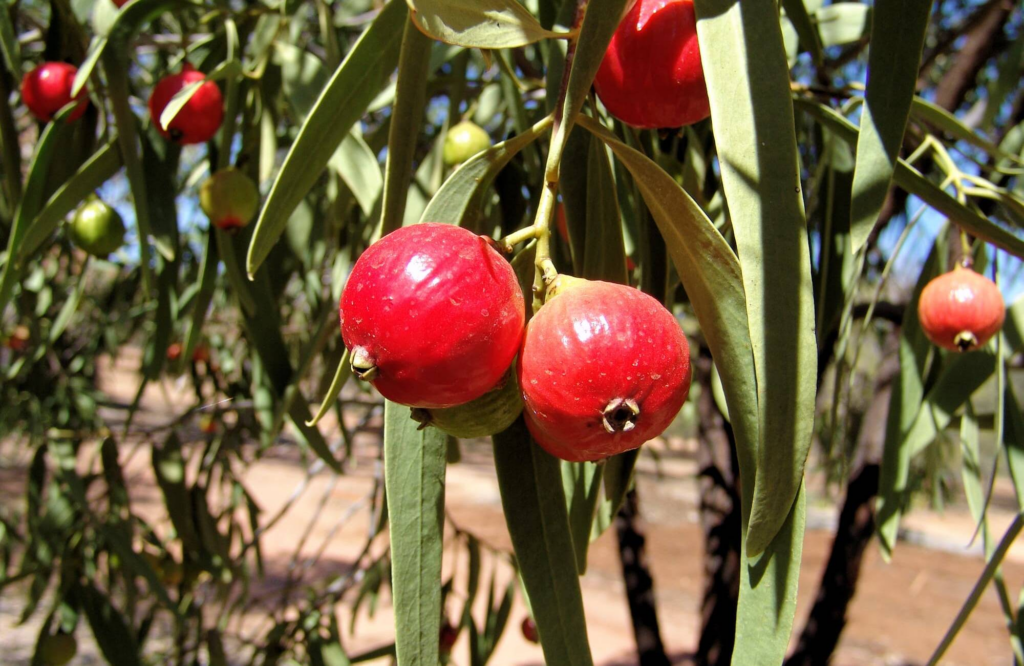
Desert Quandong is a popular wild fruit from Australia’s deserts. It’s been used for a long time for its unique taste but is hard to grow on farms. That’s why it’s only found in the wild.
This fruit has a bright red color and a taste that might remind you of peaches or apricots. Known scientifically as Santalum Acuminatum, it’s also full of Vitamin C. People living in the Australian deserts pick these berries right off the trees when they’re ripe, as part of their local customs.
18. Red Mango

Red mangoes aren’t just pretty to look at with their bright color, they’re also full of good stuff for your body. They have lots of vitamins A, C, and E, which help you stay healthy and see well.
These mangoes are also full of important minerals like potassium, calcium, and iron, which are good for strong bones and overall health. People love red mangoes for their sweet taste and smooth texture. They’re perfect to eat by themselves or mixed in with other fruits or desserts. So, they’re not just tasty but also great for your health.
19. Red Mulberry
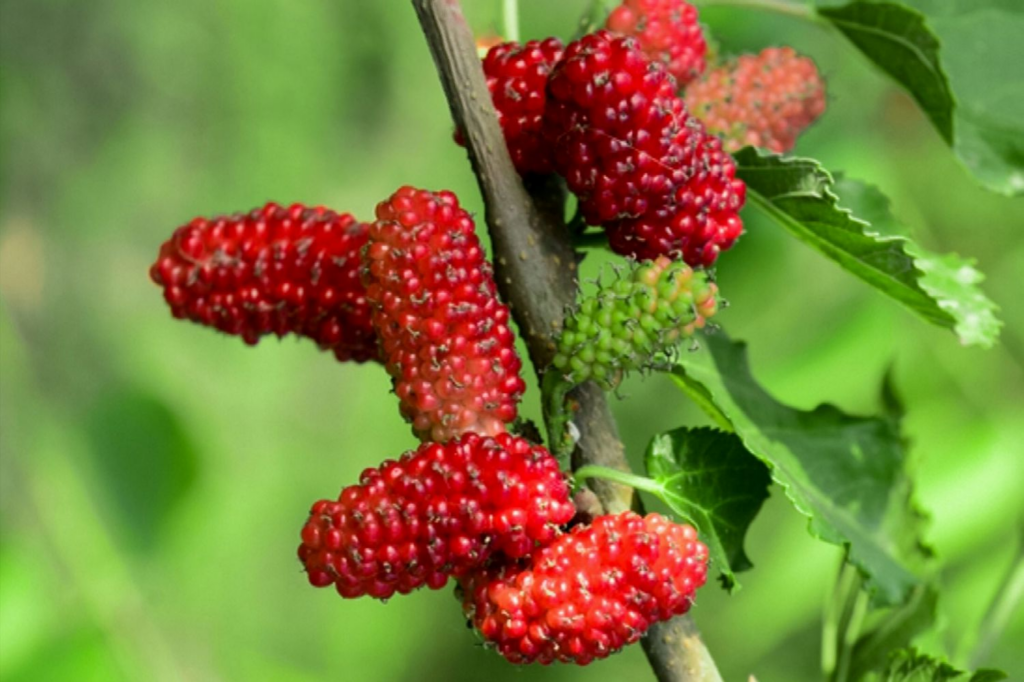
The red mulberry is a bright, sweet fruit that’s even sweeter than blackberries. It’s a healthy choice too, with lots of beta-carotene, iron, potassium, manganese, folic acid, and vitamins A, C, K, and the B complex.
Red mulberries also have something called resveratrol, a powerful antioxidant. Eating them not only gives you a tasty treat but also brings many health benefits, so why not enjoy these delicious berries today?
20. Red Passion Fruit

The red passion fruit is a colorful and tasty fruit from South America. It has a mix of sweet and sour flavors that make it a great addition to all sorts of recipes. The red passion fruit can add a splash of color and taste to fruit bowls, desserts, or drinks.
It’s not just delicious; it’s also full of vitamins and antioxidants. Eating red passion fruit can help improve your immune system and keep your body healthy. So next time you want to add some excitement to your food, think about using red passion fruit.
21. Red Pear

Red pears are more than just tasty; they come with lots of health benefits. Their beautiful color makes any plate look good. You can enjoy red pears in so many ways – eat them fresh, bake them, roast them, or turn them into a puree.
These pears are a great source of fiber, which is important for a healthy digestive system. They’re also filled with lots of other nutrients that are good for your body. So whether you eat them alone or as part of a dish, red pears are a great choice for a healthy and tasty treat.
“`htmlRed pears are good at helping your digestive system and can also help keep your blood sugar steady. They have lots of vitamins and minerals, including vitamin C and potassium. Because they are sweet, they can be eaten instead of sugary treats, which helps you feel full in a healthy way.
Not only are red pears great in recipes, they might be good for your health, too. Some research suggests that eating red pears might lower your chances of getting diabetes because they help control your blood sugar. Plus, they have a lot of fiber, which is good for keeping a healthy weight and for your heart.
22. Red Plum

Red plums are juicy, sweet, and come in a pretty red color. They can be round or oval and have a big seed in the middle that’s easy to take out when you eat them or use them to cook. You can enjoy red plums as a snack, in fruit salads, desserts, and even make them into jam. Plus, there are new kinds like pluots, which are a mix between plums and apricots and have a special taste and texture. Red plums are a tasty addition to any dish.
23. Red Chokecherry

The red chokecherry is a small, tart fruit from North America. It’s very sour if you eat it raw, but if you cook it, it becomes tastier. People use it to make things like jelly, wine, and syrup. It’s also got good stuff for your body, like antioxidants and vitamin C. Red chokecherry is not only pretty to look at but also gives a nice, tangy flavor to your food.
24. Lychee Fruit

Lychee is a tropical fruit that comes from places like China. It’s full of juiciness and is super sweet. Eating lychees gives you more than enough vitamin C for the day, which is great for keeping you healthy and fighting off sickness. They are also full of fiber which helps your digestion and your heart. You can eat lychees fresh, put them in fruit salads, or use them to make yummy desserts. They are not just tasty but also really good for you.
25. Prickly Pear
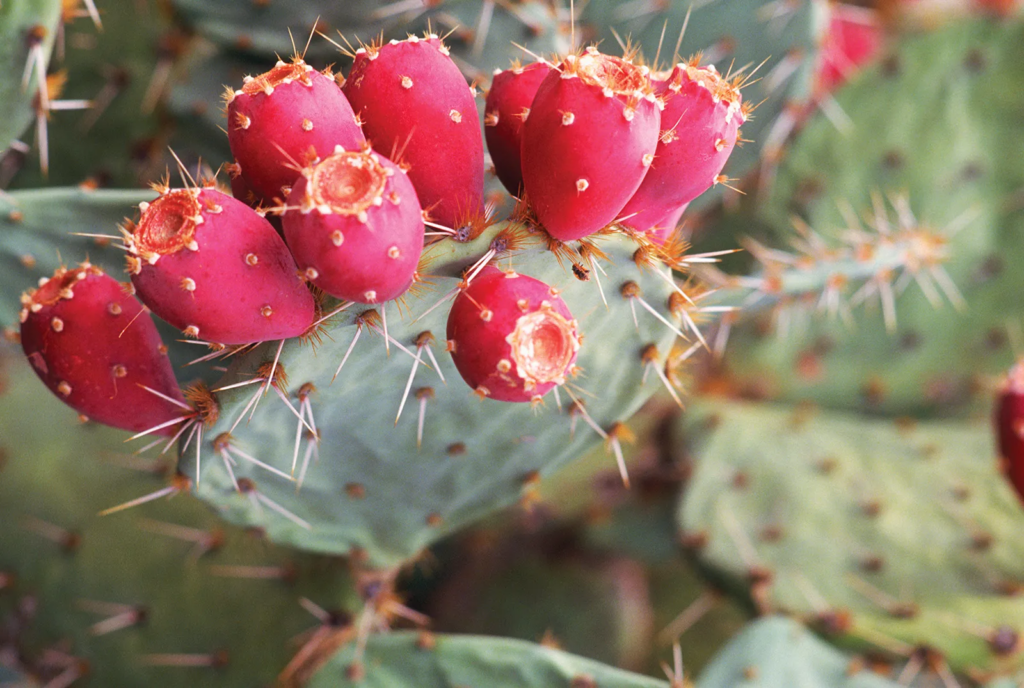
The Prickly Pear, also known as Nopal, is a bright red fruit that comes from Mexico. You can eat it in lots of ways, like raw, cooked, or even in dishes like salads, soups, and tacos. Some kinds of red pears like Magness, Starkrimson, and Red Bartlett are also nice to eat fresh, in salads, or with cheese. Prickly Pear has a special taste and lots of good nutrients, making it a great choice for cooking.
26. Watermelon
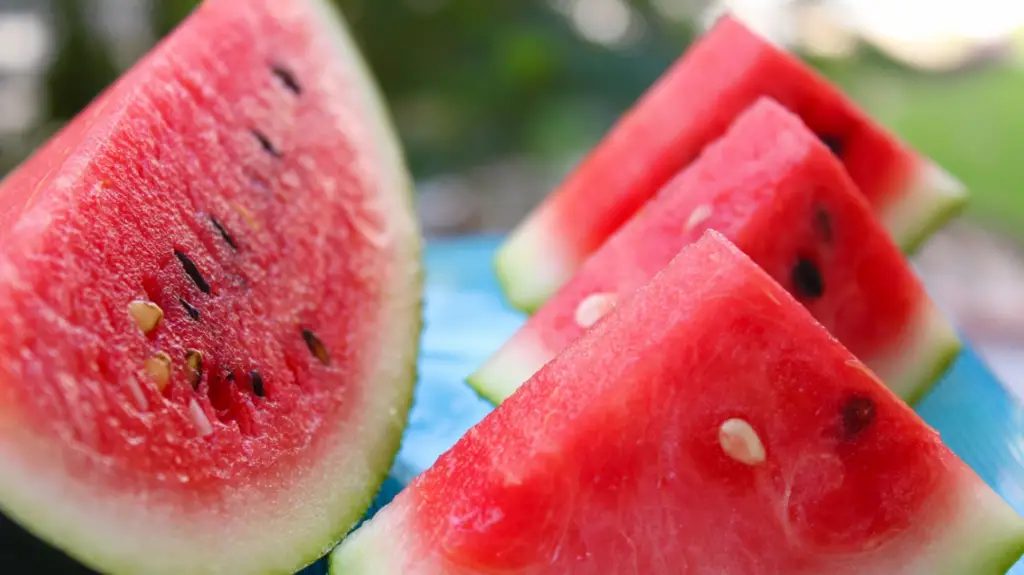
Watermelon is a big red fruit that’s full of water and doesn’t have many calories, so it’s great when you’re thirsty or it’s hot outside. It has vitamins A and C, which help you stay healthy and see well. You can eat watermelon in so many ways, like in a salad, as a juice, or you can even make it into treats like sorbets and ice cream. It is not just yummy but also very good for you.
27. Lingonberry

Lingonberries are small, very tart red berries that are a bit like cranberries. They grow in places like North America, Europe, and Japan. People use them in lots of foods like jam, syrup, baked stuff, and juices. They’re also packed with vitamins and fiber, so they’re good for you and add a zesty taste to whatever you’re eating.
28. Red Tamarillo
“`
The red tamarillo, also known as the tree tomato, is a unique and yummy fruit with a bright red or orange skin. It’s about the size of a plum and has small, tasty seeds inside surrounded by a tart and slightly sour flesh. Besides adding a splash of color to your meals, this fruit is also packed with benefits for your health.
Red tamarillos are great because they don’t have many calories and they’re full of fiber, making them perfect for those who want to keep a healthy weight. They also have important vitamins and minerals like vitamin A and vitamin C. Try adding this tangy fruit to your foods for its great taste and health-boosting qualities.
29. Goji Berries

Red fruits like goji berries not only make your plate look pretty but they’re also full of nutrients that are good for you. These tiny, vibrant red berries come from China, where they’ve been used in traditional Chinese medicine for a very long time. Goji berries come packed with good stuff like vitamin C, fiber, and antioxidants. You can snack on them dry for a sweet and tangy taste, or put them in things like yogurt and ice cream to make them even yummier and healthier.
Goji berries are full of antioxidants which means they help your body fight against damage from free radicals and keep you healthy overall. Including them in your diet might boost your energy, help keep your heart healthy, and make your immune system stronger. So next time you want a nutritious snack, give goji berries a go!
30. Saguaro Cactus Fruit
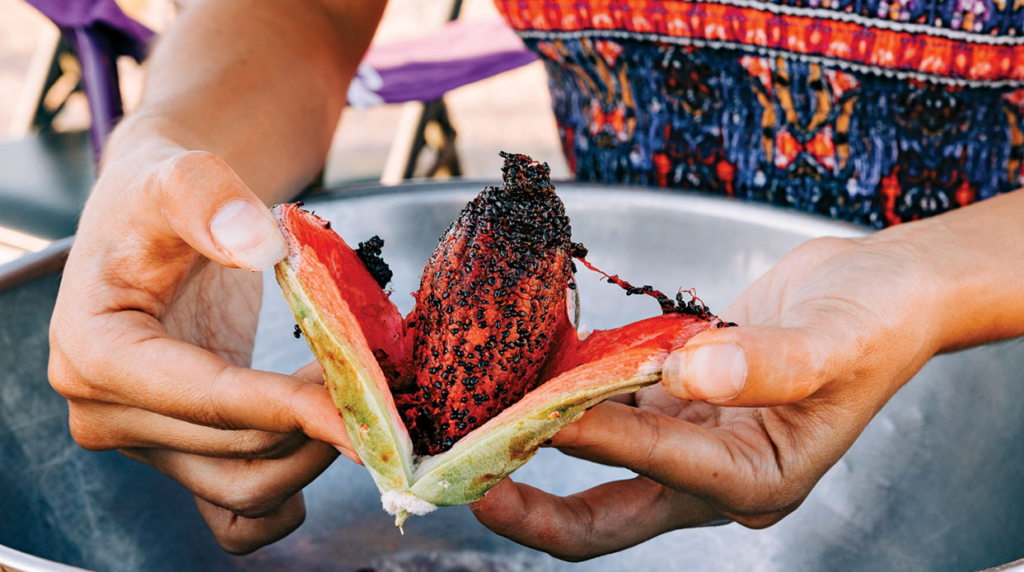
The saguaro cactus fruit is a tasty red fruit from the Sonoran Desert that’s also full of nutrients. For a long time, Native American tribes in the area have enjoyed its sweet taste and juicy texture, along with its edible seeds that taste a bit nutty.
This fruit isn’t just delicious; it’s loaded with important vitamins like vitamin C and B12. Plus, it has a lot of fiber which is good for a balanced diet. Its unique taste and health benefits make the saguaro cactus fruit a really special addition to the world of red fruits.
31. Muntingia

Muntingia, or Jamaican cherries, are small, sweet fruits from places like the Caribbean, Mexico, and South America. They have a bright red color and a delicious taste, and they’re really nutritious too.
Even though they might be hard to find in some areas, you can try growing your own muntingia by getting seeds or a young tree from a special seed shop. Not only are these fruits a tasty treat, but they’re also loaded with nutrients like potassium and calcium, which makes them a great part of your diet. So why not try out the tropical flavors of muntingia and enjoy its health benefits too?
32. Hawthorn Berries

Hawthorn berries are bright red and not only look good but are also full of healthy stuff. These berries grow on bushes and trees, and their lovely appearance often attracts birds too.
Having a few hawthorn berries can be great for your heart and can help lower blood pressure because they’re rich in antioxidants and dietary fiber. But remember, eating too many at once might cause an upset stomach and other digestive issues.
33. Dates

Dates turn red when they’re full ripe and are known for their sweet taste and fiber content. These fruits are more than a yummy natural sweetener; they come with a lot of health benefits. Fiber in dates helps with your digestion and keeps your brain working well.
Adding dates to what you eat helps control blood sugar and keeps your digestive system healthy. With their lovely red color and sweet taste, dates can make fruit salads, desserts, and savory dishes taste even better. Don’t miss out on the benefits of these sweet and fiber-rich red fruits!
34. Figs

Figs, known for their deep red color and sweet taste, are not just delicious to eat but also offer lots of nutrition. They are a great source of fiber, which is important for keeping your digestive system happy and avoiding constipation.
Also, figs give us important vitamins and minerals like magnesium, potassium, and calcium, which help keep our bones strong. Plus, they have powerful antioxidants like gallic acid that can help protect our bodies from disease. Figs can be enjoyed when they’re fresh and add a special flavor that can make many dishes even more delightful.
If you like to toss things into your salads or want something sweet in your cakes or ice cream, red fruits can be a great choice. They’re full of flavor and can make your dishes more exciting.
35. Mombin

Have you ever heard of red mombin? It’s also called spondias purpurea and comes from Central America. This fruit is pretty tiny and has a bright red color that makes it stand out. It’s not easy to find outside of its home region, so if you do come across it, consider yourself lucky!
When red mombin gets really ripe, it tastes super sweet and you can eat it just like that. Some people even boil it until it turns into a sweet treat like honey. You’ll find red mombins in different colors too – they can be yellow, dark red or even reddish-green, depending on how ripe they are.
Red mombin may not be as famous as other red fruits, but it’s definitely worth a try for its unique taste and the fact that it comes from such an exotic place. If you get a chance, don’t miss out on tasting red mombin’s sweet flavor.
Components of Red Fruits That Make Them Beneficial
Red fruits are more than just tasty; they’re loaded with good stuff for your body. They have few calories and not much sodium, which is great if you’re trying to keep an eye on your weight or blood pressure. One of the special things in red fruits is lycopene. It’s this strong antioxidant that gives them their lovely red color.
People have done a lot of research on lycopene because it may help lower the chance of getting certain cancers. It seems to be especially good at protecting against prostate, lung, and stomach cancers. Lycopene isn’t just an antioxidant; it’s also anti-inflammatory, helping to guard against illness.
Besides lycopene, red fruits are full of vitamins, minerals, and fiber, which are all important for keeping you healthy. They’re also pretty good for your eyes and might help stop a condition called macular degeneration, which can make older people lose their vision.
Some well-liked red fruits are tomatoes, watermelons, strawberries, raspberries, and cherries. Eating them fresh or in your meals can give you a boost of sweetness and important nutrients. Having red fruits as part of your diet is good for you in lots of ways. They can help your heart, cut down on the risk of long-term diseases, and help you stay well.
To wrap it up, red fruits are super because of the lycopene, vitamins, minerals, and fiber in them. They don’t have many calories or sodium, and they can help reduce inflammation and fight cancer. Eating red fruits every day is a tasty way to help keep your heart healthy, fend off sickness, and just feel great.

